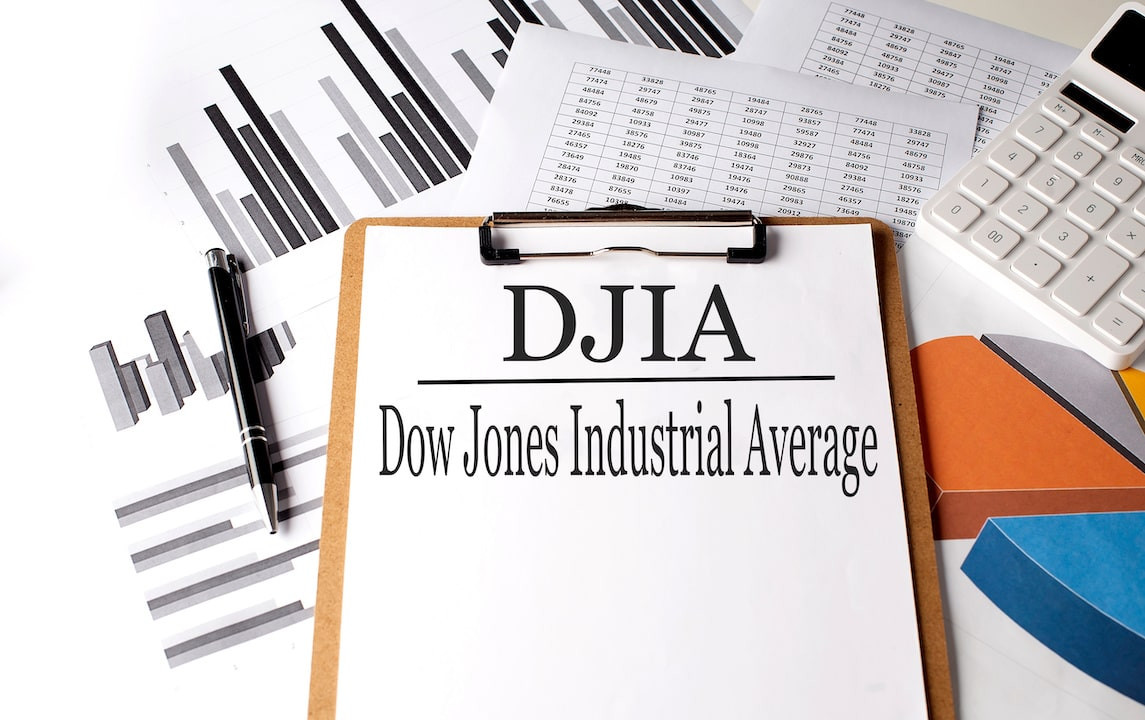The Dow Jones Industrial Average (DJIA), also known simply as the Dow, is one of the most widely recognized stock market indices in the world. Represented by the ticker symbol (INDEXDJX: .DJI), the DJIA tracks the performance of 30 prominent publicly traded companies on the New York Stock Exchange (NYSE) and the NASDAQ. These companies span various sectors, providing a snapshot of the broader U.S. economy’s health.
Historical Background
The DJIA was created by Charles Dow, the co-founder of Dow Jones & Company, along with Edward Jones, in 1896. Initially, the index included 12 companies, primarily from the industrial sector. This reflected the industrial economy’s dominance during that period. As the U.S. economy evolved, so did the DJIA, expanding to 30 companies in 1928, a composition that remains to this day, although the companies in the index have changed over time.
The original companies in the DJIA were heavyweights in industries like railroads, gas, and sugar, reflecting the economic drivers of the era. Over the years, as the U.S. economy transitioned from industrial-based to service and technology-oriented, the DJIA adjusted its components to include companies from diverse sectors such as technology, consumer goods, healthcare, and finance.
Composition and Selection Criteria
The DJIA is not a static index; its composition is periodically reviewed and adjusted to ensure it reflects the most significant and influential companies in the U.S. economy. The index is price-weighted, meaning that stocks with higher prices have a more significant impact on the DJIA’s movement than those with lower prices. This differs from other indices, such as the S&P 500, which are market-capitalization-weighted.
The selection of companies in the DJIA is done by the index committee at S&P Dow Jones Indices, which includes editors of The Wall Street Journal. The criteria for selection are not strictly defined but typically include considerations like the company’s reputation, its ability to reflect economic conditions, and the interest of investors in the company’s stock.

How the DJIA is Calculated
Unlike many other indices, which are weighted by market capitalization, the DJIA is price-weighted. This means that the index is calculated by summing the prices of its 30 component stocks and dividing by a divisor. The divisor is adjusted for stock splits, dividends, and other corporate actions to ensure that these events do not distort the index’s value. As of today, the divisor is less than one, which means that a one-point change in any of the 30 stocks has a greater than one-point effect on the index.
The price-weighted nature of the DJIA means that companies with higher stock prices can disproportionately affect the index’s movement. For example, if a stock priced at $300 in the DJIA increases by 10%, it will have a more significant impact on the index than a 10% increase in a stock priced at $50.
The Role of the DJIA in Financial Markets
The DJIA is often viewed as a barometer of the overall health of the U.S. economy and financial markets. Although it comprises only 30 companies, these companies are large, influential, and broadly represent the main sectors of the economy. When the DJIA rises, it is generally interpreted as a sign that investors are confident about the economy’s prospects. Conversely, when the DJIA falls, it may signal economic trouble or declining investor confidence.
Criticisms and Limitations
Despite its prominence, the DJIA has faced criticism over the years. One of the main criticisms is its price-weighted methodology, which can skew the index’s performance based on the price movements of a few high-priced stocks. This can lead to a situation where the DJIA does not accurately represent the performance of the broader market or economy.
Moreover, with only 30 companies, the DJIA is not as diversified as other indices like the S&P 500 or the NASDAQ Composite, which include hundreds or even thousands of stocks. As a result, the DJIA might not fully capture the performance of the entire market, particularly in sectors that are underrepresented in the index.
Another criticism is that the DJIA includes only large-cap stocks, which means it does not account for the performance of small or mid-cap companies that can be crucial to the economy’s overall growth. This exclusion can lead to an incomplete picture of the market’s health.
Major Milestones in the DJIA’s History
Over its long history, the DJIA has witnessed numerous milestones that reflect both the growth of the U.S. economy and the challenges it has faced. Some of these milestones include:
- The Great Depression: The DJIA reached its peak before the Great Depression at 381.17 points on September 3, 1929. The subsequent stock market crash in October 1929 wiped out nearly 90% of its value, with the DJIA bottoming out at 41.22 points in July 1932.
- The Post-War Boom: After World War II, the DJIA entered a period of sustained growth, reflecting the economic boom in the United States. It crossed the 1,000-point mark for the first time in 1972.
- The 1987 Crash: On October 19, 1987, known as Black Monday, the DJIA plunged by 22.6%, the largest single-day percentage drop in its history. The crash was caused by a combination of factors, including program trading, overvaluation, and market psychology.
- The Dot-Com Bubble: In the late 1990s, the DJIA surged as the dot-com bubble inflated, driven by investor enthusiasm for technology stocks. The index reached a peak of 11,722.98 points in January 2000 before the bubble burst.
- The 2008 Financial Crisis: The DJIA experienced significant volatility during the 2008 financial crisis, with the index losing more than 50% of its value from its peak in 2007 to its trough in March 2009. It fell to a low of 6,547.05 points before beginning a long recovery.
- Recent Performance: The DJIA has seen significant growth in the years following the 2008 financial crisis, buoyed by economic recovery, corporate earnings growth, and accommodative monetary policy. In 2020, despite the COVID-19 pandemic causing a brief but sharp decline, the DJIA rebounded and continued to reach new highs, surpassing the 30,000-point mark for the first time in its history in November 2020.
The DJIA Today
As of today, the DJIA continues to be a key indicator of market sentiment and economic health. It includes major corporations like Apple, Microsoft, Boeing, and Goldman Sachs, which are leaders in their respective industries. The index is closely watched by investors, policymakers, and economists for insights into market trends and economic conditions.
The DJIA is also used as a benchmark for various financial products, including mutual funds and exchange-traded funds (ETFs). These products allow investors to gain exposure to the performance of the DJIA without directly buying all 30 component stocks.
Conclusion
The Dow Jones Industrial Average (INDEXDJX: .DJI) remains one of the most important and recognizable stock market indices globally. Despite its limitations, such as the price-weighted methodology and limited number of components, it continues to serve as a key barometer of U.S. economic health and investor sentiment. Over more than a century, the DJIA has evolved alongside the U.S. economy, reflecting the changing landscape of American industry and finance.
As the economy continues to change, the DJIA will likely undergo further adjustments to its composition, ensuring it remains relevant as a tool for measuring market performance. For investors, understanding the DJIA’s composition, calculation, and historical significance is essential for interpreting its movements and making informed investment decisions.




